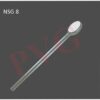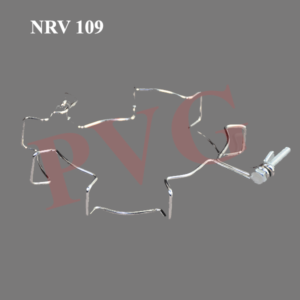NSG- 9 SALT BRIDGE WITH SINTERED DISC
A salt bridge is a device used in an electrochemical cell for connecting its oxidation and reduction half cells wherein a weak electrolyte is used. In other words, a salt bridge is a junction that connects the anodic and cathodic compartments in a cell or electrolytic solution.
Glass tube salt bridges commonly consist of U-shaped tubes filled with a relatively inert electrolyte.
A salt bridge is an important part of an electrochemical cell. A salt bridge is a glass tube that connects the two sides of a an electrochemical cell and provides electrolytes needed to neutralize the solutions in both sides of the cell.
Purpose of Salt Bridge
The function of a salt bridge in electrochemical cell is to keep electrical neutrality in the solutions by providing an electrical contact between both sides of the galvanic cell without any mixing of the solutions. Without a salt bridge, negative charge will collect into just one side of the electrochemical cell and the other side will be positively charged as ions are created and become part of each sides solution. If both sides of the cell become polarized in charge then the electrical current will not be produced. The purpose of salt bridge is to continue the reaction that produces the electrical current, without it charge would polarize and electrical current would cease. Essentially the purpose of a salt bridge would be maintain neutrality of charge between the two sides of an electrochemical cell so that electric current can continue to be produced.
Construction : Apparatus consist of Inverted Glass U tube,With over all height 100 mm ends closed with Sintered Disc . Width 80 mm.Diameter of arms.13 mm
Material : Chemical resistant clear Borosilicate 3.3 glass and Sintered Disc
Be the first to review “SALT BRIDGE WITH SINTERD DISC” Cancel reply
Related products
Laboratory Glassware
Laboratory Glassware
Laboratory Glassware
Laboratory Glassware
Laboratory Glassware












Reviews
There are no reviews yet.